| |
|
| |
Name |
Moran Wang |
|
|
|
|
|
|
|
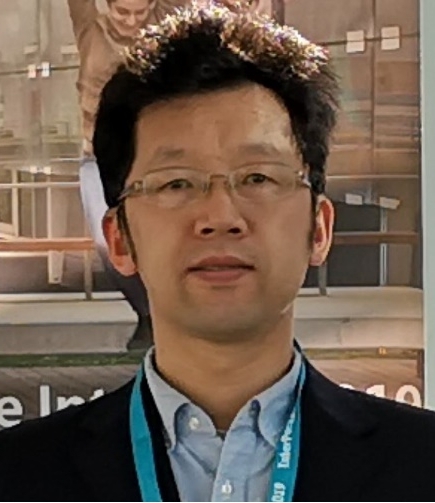 |
|
| |
Email |
mrwang@tsinghua.edu.cn |
|
|
|
|
|
|
|
|
| |
Affiliation |
Tsinghua University |
|
|
|
|
|
|
|
|
| |
Title |
Pore-scale modeling of heat and mass transfer in porous media: challenges and recent progress |
| |
Abstract |
Porous media is ubiquitous in nature and engineering applications. Correct understanding of transport mechanisms and accurate prediction of transport behavior of heat and mass transfer in porous media become crucial for design and optimization of porous materials. Pore-scale modeling provides a powerful tool, yet have met several challenges because of the contradiction between description resolution and computational costs. In this talk, we will introduce some ideas of revisiting and reconsidering this issue and some new progresses in exploring such challenges based on the intrinsic characteristics of porous media. |
|
| |
Short Bio
|
Moran Wang is a Professor of Fluid Mechanics and Thermophysics at Tsinghua University. He obtained Bachelor and PhD degrees from Tsinghua University, and held postdoc positions in Johns Hopkins University and University of California of USA. He worked at Los Alamos National Laboratory as an Oppenheimer Fellow. He has been a full professor at Tsinghua University since 2011. He is working on microscale fluid mechanics, heat and mass transfer in porous media, multiscale modeling and interface science. He has authored over 200 peer-reviewed papers on international journals which gained over 13k citations based on Google Scholar Reports (H-index: 58). Prof. Wang has been serving as editorial board members for several international journals including “International Journal of Mechanical Sciences”, “Journal of Colloids and Interface Science”, “Transport in Porous Media”, “Journal of Porous Media” and so on. He has been invited to contribute comprehensive reviews on “Physics Reports”, “Material Science and Engineering R: Reports”, “Progress in Materials Science” and so on. He was awarded J.R. Oppenheimer Fellowship in 2008, Interpore P&G Award in 2019 and Fellow of IMMS in 2022.
|
|
| |
Name |
Nihad Dukhan |
|
|
|
|
|
|
|
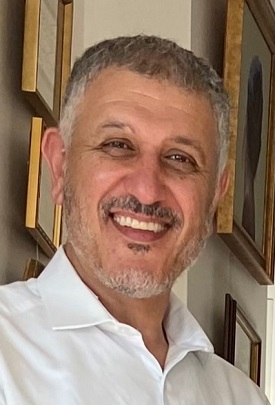 |
|
| |
Email |
dukhanni@udmercy.edu |
|
|
|
|
|
|
|
|
| |
Affiliation |
University of Detroit Mercy |
|
|
|
|
|
|
|
|
| |
Title |
Professor and Chair
|
| |
Abstract |
An Engineering Model for Heat Transfer in Metal-Foam Heat Sinks
Metal foams have been investigated for both forced and free convection heat transfer applications. However, there appear to be no simple engineering models for heat transfer in metal foams when heated from one side. Here, a new engineering model is presented to fill this gap. The model is developed from first principles of heat transfer and the concept of thermal resistance network. It identifies the various resistances present inside and outside the foam, and the associated temperature difference for each. A few coefficients were needed to calibrate the model, and they were determined from experimental data on an actual aluminum foam sample heated from below with a constant heat flux, and cooled by room air by natural convection. Subsequently, the model of the thermal resistance of the foam was validated by further experiments on three foam samples having different materials and morphological properties. There was very good agreement between the thermal resistances of the foam as predicted by the model and its experimental counterparts. The heated wall temperature was predicted by the model within reasonable error. The model allows optimization of metal foam in terms of pore density and porosity for free convection.
|
|
| |
Short Bio
|
Dr. Nihad Dukhan is a professor and chair of mechanical engineering at University of Detroit Mercy. His include 177 refereed articles and two books. Prof. Dukhan is among the few scholars who significantly contributed to the advancement of the science and technology of metal foam in the fundamental and applied realms. Dr. Dukhan's research continues to make significant impact on understanding of flow and heat transfer in metal foam, especially for thermal management designs for electronics and heat transfer enhancement. Professor Dukhan has edited the most recent book on metal foam technology: Metal Foams Fundamentals and Applications, DEStech Publications, Lancaster, PA, 2013. He chaired the 11th edition of the biannual international conference on metal foam in 2019, and has been serving as a member of the steering committee of the conference ever since. His research work had been funder by NSF, Ford Motor Company, Pratt and Whitney, NASA-PR Space Grant Consortium scholarship/Fellowship Program, DENSO North America and Constellium. Professor Dukhan’s pedagogical publications cover thermodynamics understanding, service learning, undergraduate research, and non-technical skills. Dr. Dukhan is an invited speaker in national and international conferences. His work has been recognized through prestigious awards, including the Faculty Achievement Award (the highest honor from University of Detroit Mercy), Fulbright Scholar Award and Fellow grade of the American Society of Mechanical Engineers.
|
|

|
| |
Name |
Bowen Ling |
|
|
|
|
|
|
|
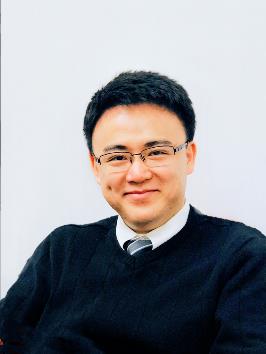 |
|
| |
Email |
lingbowen@imech.ac.cn |
|
|
|
|
|
|
|
|
| |
Affiliation |
Institute of Mechanics, Chinese Academy of Sciences
School of Engineering Science, University of Chinese Academy of Sciences |
|
|
|
|
|
|
|
|
| |
Title |
Effect of Nucleation Heterogeneity on Mineral Precipitation in Confined Environments |
| |
Abstract |
The development of new mineral phases in confined spaces, especially within porous media, plays a critical role in geological processes like mineralization and diagenesis. This process begins at the microscale through interactions between fluids and rocks, where primary phases dissolve, creating supersaturated conditions that facilitate the nucleation and growth of secondary minerals. As nuclei form on the surface of the media, mineral accumulation ensues, leading to precipitation and growth at larger scales. Past studies have typically focused on either precipitation or nucleation independently, rather than exploring their combined influence, particularly on the pore-scale reactive transport in fluid-rock interactions. Understanding the synergistic effects of these phenomena is essential for accurately predicting the evolution of porosity and permeability during reactions. Our research introduces a computational framework that integrates classical nucleation theory with the micro-continuum method. This approach enables the study of pore-scale reactive transport while incorporating nucleation dynamics. We examined how nucleation and precipitation interact and affect pore-scale flow and transport properties, such as permeability, within confined environments. Our findings indicate that adjusting surface nucleation rates can alter precipitation patterns from preferential to more uniform textures. Furthermore, our study highlights that traditional deterministic precipitation methods may underestimate the permeability of porous matrices in specific scenarios. |
|
| |
Short Bio
|
Bowen Ling completed his Ph.D. in Mechanical & Aerospace Engineering at the University of California, San Diego, specializing in Engineering Science. Following this, he conducted postdoctoral research at Stanford University in Energy Resources Engineering. Dr. Ling’s research is dedicated to investigating multiscale flow and transport processes within complex geometries found in both industrial and natural heterogeneous systems. His group employs a combination of theoretical, experimental, and computational analyses to model the dynamic behavior of these systems and explore the coupling of multiple physics in energy-related applications. His research findings have been primarily published in academic journals such as PNAS, GRL, JFM, IEEE TGRS, PoF, PRF, and others.
|
|
|
| |
Name |
Ruming PAN |
|
|
|
|
|
|
|
 |
|
| |
Email |
ruming.pan@hit.edu.cn |
|
|
|
|
|
|
|
|
| |
Affiliation |
School of Energy Science and Engineering, Harbin Institute of Technology |
|
|
|
|
|
|
|
|
| |
Title |
The role of porous media in solid waste treatment and valorization |
| |
Abstract |
Porous media play an important role in solid waste treatment and valorization. We focus on the treatment of solid pollutants by smoldering, and the role of porous media in heat transfer enhancement during pyrolysis and gasification of biomass and waste plastics. We constructed a two-dimensional robust model of smoldering by introducing the thermally thick approximation. The heat generated from smoldering of solid pollutants is utilized to pyrolyze solid wastes. Further, the concept of smoldering-driven pyrolysis reactor is proposed. In addition, the emergence of ''hot spots'' was used as a criterion for determining the ignition of smoldering. We also introduced the porous skeleton structure with high thermal conductivity into the value-added treatment process of biomass and waste plastics, and established the numerical models. Finally, we proposed a novel direct-radiation solar reactor for solid waste valorization and developed numerical models considering different wavelengths. |
|
| |
Short Bio
|
Ruming PAN, Associate Professor of Harbin Institute of Technology (HIT), Doctor of Engineering. His research interests are Solar Thermal Utilization and Heat and Mass Transfer Enhancement in Porous Media. Dr. Ruming PAN has published more than 30 SCI papers in journals such as Nature Communications and Communications Chemistry, including 1 cover-page paper. He is currently serving as a Young Editorial Board Member of the SCI journal Rare Metals and a Guest Editor of Molecules. He received the Prix Jean Nougaro (Provincial Outstanding Young Scholar Award) in Engineering Physics from the Toulouse Academy of Sciences, France for the year 2024; and the Prix Léopold Escande (Outstanding PhD Thesis) from the Toulouse INP, France.
|
|
|
| |
Name |
Ke Xu (徐克) |
|
|
|
|
|
|
|
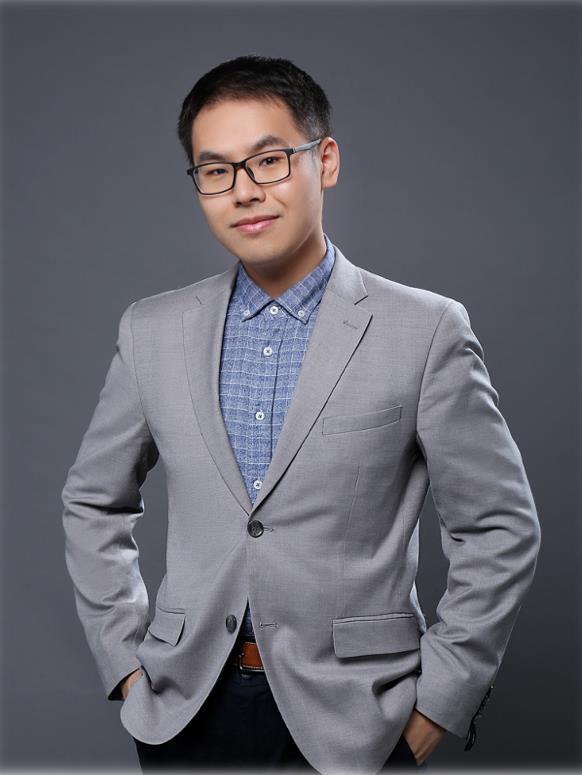 |
|
| |
Email |
kexu1989@pku.edu.cn |
|
|
|
|
|
|
|
|
| |
Affiliation |
Peking University (北京大学) |
|
|
|
|
|
|
|
|
| |
Title |
Gas mobility at thermodynamic equilibrium in porous media |
| |
Abstract |
After CO2 geological sequestration, minimum gas mobility is wanted to reduce leakage risk; in natural gas production and subsurface H2 storage, in contrast, high gas mobility is favored to enhance recovery. Unfortunately, although hydrodynamic history determines short-term gas morphology and mobility, subsequent relaxation process may reshape fluid spatial distribution in long-term, and the consequences have not been clarified.
We conduct microfluidic experiments to study static gas ganglia evolution in porous media, at large time-scale that quasi-equilibrium state can be achieved. Surprising phenomena are observed: a slowly expanding gas ganglion is always of high continuity and thus high mobility; however, a slowly shrinking gas ganglion is fragmented by spontaneous formation of liquid bridges that break the ganglion into pieces, which reduce gas mobility.
This observation is theoretically rationalized with thermodynamic analysis. Forming liquid bridges increases free energy in high curvature (expanding) ganglia; in contrast, forming certain number of liquid bridges can significantly reduce the free energy of low curvature (shrinking) gas ganglia. The thermodynamically optimum morphology can be analytically resolved in a 2-D homogeneous medium. In addition, spontaneous ganglia fragmentation results in major enhancement in mass transfer efficiency.
This study provides support on evaluating CO2 sequestration and H2 storage economics。 |
|
| |
Short Bio
|
Ke Xu, assistant professor of Peking University College of Engineering since 2020. He got bachelor and master degree in chemical engineering from Tsinghua University, and PhD degree in petroleum engineering from UT-Austin. Before joining Peking University, he worked as a postdoctoral researcher in MIT CEE for two years. He is now serving as the deputy chair of Peking University department of energy & resources engineering, and the general secretary of InterPore China committee
His major research interests include physics of complex fluids in porous media, and relevant engineering problems in carbon dioxide geological storage, extraterrestrial resource development and hydrocarbon recovery. He has published more than 40 peer-reviewed papers on PNAS, PRL, GRL, JFM, SPE J, etc. He is now hosting a National Key R&D Program Young Scientist Project, a National Young Talent project, several NSFC Projects, and multiple industrial R&D projects.
|
|
|
| |
Name |
Xianglei Liu |
|
|
|
|
|
|
|
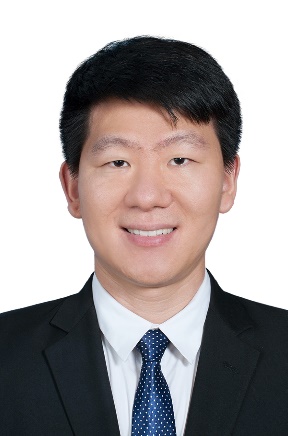 |
|
| |
Email |
xliu@nuaa.edu.cn |
|
|
|
|
|
|
|
|
| |
Affiliation |
Nanjing University of Aeronautics and Astronautics |
|
|
|
|
|
|
|
|
| |
Title |
Solar-driven greenhouse conversion into syngas via biomimetic porous foam reactors |
| |
Abstract |
The conversion of greenhouse gases to syngas using solar energy holds promises for addressing global energy and environmental challenges, but often suffers from low solar-fuel efficiency and coke-induced instability, severely hindering its scalable applications. Here, we propose a novel approach that synergizes plasmonic meta-nanoalloy catalysts with biomimetic butterfly wing-inspired reactors to achieve highly efficient and stable solar-driven upgrading of greenhouse gases into syngas. The developed NiCoZn/MgAlOx catalysts exhibit a high solar-fuel efficiency of 43.4%, an optimal H2/CO ratio of 0.97, and a conversion rate surpassing thermodynamic limitations. The underlying mechanism is attributed to plasmonic activation of the initial C-H bonding of CH4 and C-O bonding of CO2 , facilitated by hot electrons injection induced by the localized surface plasmon resonance of trimetallic nanoalloys. Further catalysts deposition on biomimetic dual-gradient foam reactors enables the system scalability, achieving the synergy of plasmonic catalysis with light transport, reactants flow, and fluid-solid energy exchange. A bench-scale solar-driven system, operating without external heating, demonstrates a remarkable solar-fuel efficiency of 40.44% and durable performance over 100 hrs. |
|
| |
Short Bio
|
Xianglei Liu is a full professor of School of Energy and Power Engineering in Nanjing University of Aeronautics and Astronautics. Prof. Liu mainly focuses on the researches of micro/nanoscale heat transfer, solar fuel production, and thermal energy storage. He has authored and coauthored 3 book chapters, more than 140 peer reviewed journal papers, and over 50 conference papers/presentations including 12 keynote presentations and 1 plenary report. He received Elsevier/JASRT Raymond Viskanta Awards, Wu Zhonghua Award for outstanding young scholars, Jiangsu Distinguished Young Scholars, and the Sigma Xi Best Ph.D. Thesis Award.
|
|
|
|
|
| |
|
| |
Name |
Kentaro Yaji |
|
|
|
|
|
|
|
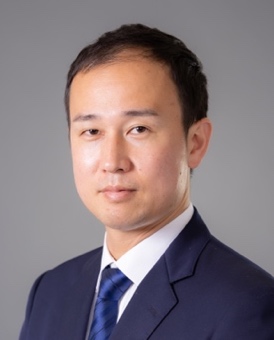 |
|
| |
Email |
yaji@mech.eng.osaka-u.ac.jp |
|
|
|
|
|
|
|
|
| |
Affiliation |
Osaka University |
|
|
|
|
|
|
|
|
| |
Title |
Invitation to topology optimization for heat transfer problems |
| |
Abstract |
Topology optimization is a method that optimizes the distribution of material within a given design space to maximize performance while efficiently using resources. This technique has broad applications across various fields, including structural, aerospace, and automotive engineering. In heat transfer devices, topology optimization can significantly enhance performance. This presentation will introduce the basic ideas and mathematical formulation for topology optimization in heat transfer problems.
A representative topology optimization method, the density-based approach, optimizes the local porosities of a target solid structure. For fluid problems, a design-dependent Brinkman-type equation is used to optimize local porosities. We will explore the relationship between topology optimization and porous media and the potential for extending these concepts to practical porous heat transfer systems.
As a leading challenge in the research community, we will also present recent research results on the design of lattice-type heatsinks and their applicability to 3D printing technology. This combination enables the creation of heatsinks with complex internal structures, improving performance beyond what traditional methods can achieve. This presentation will provide a detailed overview of these advancements and their practical applications. |
|
| |
Short Bio
|
Dr. Yaji is an Associate Professor in the Department of Mechanical Engineering at Osaka University, specializing in topology optimization and its applications to thermal-fluid devices and battery systems, as well as data-driven design using deep learning. He graduated from Kyoto University with a master’s degree in engineering in 2013 and received his Ph.D. in Engineering in 2016. Prior to joining Osaka University, he served as a Research Fellow for Young Scientists at the Japan Society for the Promotion of Science. He was also a visiting researcher at the Oden Institute for Computational Engineering and Sciences at the University of Texas at Austin from 2021 to 2022. Dr. Yaji has received numerous awards throughout his career, including the ASSMO Young Scientist Award and the JSME Design Engineering and Systems Division Award. As editor of journal papers, he worked as one of the guest editors of Structural and Multidisciplinary Optimization for a special issue on shape and topology optimization of flow-based multiphysics problems from 2021 to 2022. Additionally, he has been working as an editor of the Journal of Advanced Mechanical Design, Systems, and Manufacturing since 2023.
|
|
| |
Name |
Qian Fu |
|
|
|
|
|
|
|
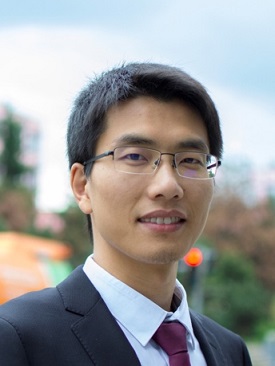 |
|
| |
Email |
fuqian@cqu.edu.cn |
|
|
|
|
|
|
|
|
| |
Affiliation |
Chongqing University |
|
|
|
|
|
|
|
|
| |
Title |
Microenvironment regulation strategies for enhanced electrochemical CO2 reduction |
| |
Abstract |
Electrochemical CO2 reduction reaction (CO2 RR) integrated with renewable energy is an attractive approach for mitigating greenhouse gas emissions and converting CO2 to value-added chemicals. However, the electrode-electrolyte interface has significant impacts on electrochemical reactions that have been inadequately acknowledged. Meanwhile, low current densities (production rates) and low energy efficiency (EE) caused limited CO2 mass transfer in the catalyst layer (CL) prevent this technology from application. Herein, we firstly investigated the cation effects in the electrical double layer on the Faradaic efficiency (FE) of target products at the electrochemical interface. And the microenvironmental regulation strategies are proposed to enhance the selectivity of target products. Furthermore, we explored the mass transfer process of CO2 molecules at the reaction interface and within CL. By optimizing the pore-scale CL structure, the design achieved stable cell operation at high current densities and EE. This work highlights the importance of tailoring the CL microenvironment as a means of improving the overall performance in the CO2 RR, and offers a unique insight to drive industrial applications of current systems. |
|
| |
Short Bio
|
Prof. Fu obtained his Ph. D degree from the Department of Systems Innovation, The University of Tokyo, Japan in 2013, and then worked as a Research Fellow at the Institute of Industrial Science, The University of Tokyo, Japan. He joined School of Energy and Power Engineering, Chongqing University as a scholar of "Hundred Talents Program" of Chongqing in 2015. He won the young scholar of “Chang Jiang Scholars Program” of Ministry of Education, China in 2019. Prof. Fu’s research interests include fuel cells and electrochemical CO2 reduction. He has authored and co-authored more than 100 journal papers. He also acted as the guest editor of special issue of Electronics, academic editor of DeCarbon, and editorial board member of Energy and AI
|
|
| |
Name |
An Liang |
|
|
|
|
|
|
|
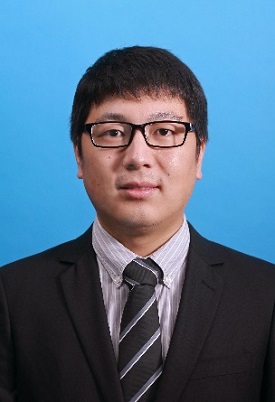 |
|
| |
Email |
liang.an@polyu.edu.hk |
|
|
|
|
|
|
|
|
| |
Affiliation |
The Hong Kong Polytechnic University |
|
|
|
|
|
|
|
|
| |
Title |
Energizing fuel cells with liquid fuels |
| |
Abstract |
Liquid fuel cells, which promise to be a clean and efficient energy production technology, have recently attracted worldwide attention, primarily because liquid fuels offer many unique physicochemical properties including high energy density and ease of transportation, storage as well as handling. However, conventional liquid fuel cells use precious metal catalysts but result in rather low performance. Recently, a novel system using an electrically rechargeable liquid fuel (e-fuel) for energy storage and power generation has been recently proposed and demonstrated. The e-fuel is stated to be attainable from diverse kinds of materials such as inorganic materials, organic materials, and suspensions of particles. In our research, we energize fuel cells with this e-fuel. It is demonstrated that without using any catalysts for fuel oxidation, this fuel cell running on the e-fuel leads to a significant performance boost. |
|
| |
Short Bio
|
Dr. An Liang is currently an Associate Professor of Mechanical Engineering at The Hong Kong Polytechnic University. He received his BEng degree in Thermal and Power Engineering from Harbin Institute of Technology and PhD degree in Mechanical Engineering from The Hong Kong University of Science and Technology. His research interests include advanced energy conversion and storage technologies, such as fuel cells and flow batteries. |
|
| |
Name |
Shuai GONG |
|
|
|
|
|
|
|
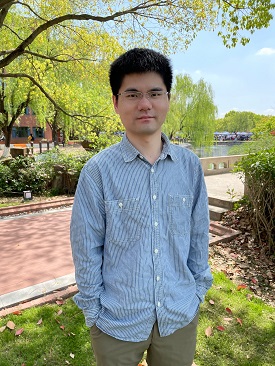 |
|
| |
Email |
shuaigong@sjtu.edu.cn |
|
|
|
|
|
|
|
|
| |
Affiliation |
Shanghai Jiao Tong University |
|
|
|
|
|
|
|
|
| |
Title |
Recent progresses on modeling evaporation and nucleate boiling heat transfer: from nanoscale to macroscale |
| |
Abstract |
Liquid-vapor phase-change processes such as boiling and evaporation have been widely used for thermal management of high flux electronics. I will introduce our recent progresses on modeling multiscale liquid-vapor phase change processes. On the nanoscale, we propose a mesoscopic approach for steady/transient nanoscale evaporation heat transfer characteristics. By incorporating a mean-field approximation of solid-fluid interaction which is analytically derived by integrating the molecular level interaction, we successfully capture the disjoining pressure effect and elucidate its suppression effect on nanoscale evaporation heat transfer. We demonstrate that solid-fluid interaction plays dominant roles on the interfacial transport during nanoscale evaporation, and vapor transport resistance has nonnegligible influences on the evaporation heat/mass transport in nano-confined spaces. On the microscale to macroscale, we propose a high-fidelity numerical approach for simulating nucleate boiling heat transfer by considering microlayer evaporation and contact angle hysteresis effect. Our simulated transient bubble shape, bubble growth rate, and bubble departure diameter agree very well with the experiments. Notably, we compare our simulated transient and local temperature distribution beneath the bubble with experiments and show very good agreement as well. The multiscale heat transfer mechanisms elucidated are helpful for the design of cooling strategies for next generation ultrahigh heat flux electronics. |
|
| |
Short Bio
|
Dr. Shuai Gong is currently an associate professor in School of Mechanical Engineering, Shanghai Jiao Tong University. He obtained his PhD from Shanghai Jiao Tong University (SJTU) in 2015, then worked as a postdoctoral researcher at SJTU (2015-2017) and Massachusetts Institute of Technology (MIT, 2017-2019). His research interests include micro/nanoscale liquid-vapor phase change heat transfer, wetting and interfacial dynamics, and mass transport in electrocatalytic hydrogen production. He was selected as World’s Top 2% scientists 2022 & 2023 by Stanford University and Elsevier. |
|
| |
Name |
Umesh Madanan |
|
|
|
|
|
|
|
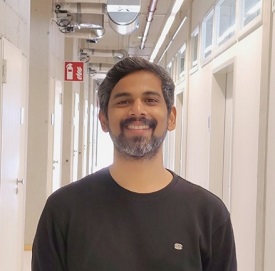 |
|
| |
Email |
umadanan@iitk.ac.in |
|
|
|
|
|
|
|
|
| |
Affiliation |
Indian Institute of Technology Kanpur |
|
|
|
|
|
|
|
|
| |
Title |
Addressing the Nusselt number divergence across varied fluid-solid combinations in Darcy-Bénard convection |
| |
Abstract |
Natural convection in fluid-saturated, horizontal porous media is pivotal in numerous geological and environmental processes. Extensive research has been conducted over the years to study this heat transfer behavior under various operating and geometric conditions. However, reason for divergence in Nusselt number results across various fluid-solid combinations remains unclear and, consequently, a universally applicable heat transfer correlation is yet to be developed. The present study performs three-dimensional numerical simulations using five fluids and seven solid materials for fixed geometric conditions (Darcy number = 2.91e-4 and an aspect ratio of unity) to address this gap in the existing literature. This study confirms that different fluid-solid combinations yield distinct porous-media Nusselt numbers for the same stagnant thermal conductivity of porous medium and Rayleigh-Darcy numbers. Another noteworthy observation is that increasing thermal conductivity of porous medium by enhancing solid thermal conductivity improves conduction through solid without affecting the convective heat transport through fluid. In contrast, increasing fluid thermal conductivity while keeping thermal conductivity of porous medium constant enhances convective heat transfer rate. Porous-media Nusselt numbers values are found to be independent of fluid Prandtl number and exhibit consistent and overlapping trends with Rayleigh-Darcy numbers for fluid Prandtl number > 0.1, whereas it decreases with decrease in fluid Prandtl number for fluid Prandtl number < 0.1. Two distinct correlations are developed for the porous-media Nusselt number based on these insights. |
|
| |
Short Bio
|
Umesh Madanan is an Assistant Professor in the Department of Mechanical Engineering at the Indian Institute of Technology Kanpur. His research interests lie in the field of experimental/analytical fluid mechanics and heat transfer, wherein he has authored/co-authored more than 20 journal articles in addition to several conference presentations and publications. Prior to joining IIT Kanpur as a faculty member, he received his Ph.D. in Mechanical Engineering from University of Minnesota Twin Cities, master’s degree in mechanical engineering from Indian Institute of Technology Madras, and bachelor’s (with honors) in Mechanical Engineering from University of Calicut. During the intermediate years between his academic pursuits, he gained industrial experience working at General Electric Power and Water as an Edison Engineer and as an Assistant Manager in the Product Development division at Mahindra & Mahindra Ltd. He was a recipient of the Scientific High Level Visiting Fellowship by Institut français India - Embassy of France (2022) and the Max Planck-India Mobility Grant by Max Planck Gesellschaft (MPG), Germany (2024-2026). He was also recently elected as a member of the Scientific Council for International Centre for Heat and Mass Transfer and has served as a guest editor for ASME Journal of Heat and Mass Transfer.
|
|
| |
Name |
Wen-Zhen Fang |
|
|
|
|
|
|
|
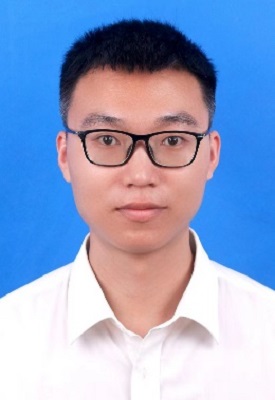 |
|
| |
Email |
fangwenzhen@xjtu.edu.cn |
|
|
|
|
|
|
|
|
| |
Affiliation |
Xi’an Jiaotong University
|
|
|
|
|
|
|
|
|
| |
Title |
Multiscale modellings on the oxygen transport resistance in PEMFCs |
| |
Abstract |
The high current performance of proton exchange membrane fuel cells (PEMFC) depends on the oxygen transport resistance in the catalyst layer. We develop the multiscale modelling techniques to explore the oxygen transport resistance of mesoporous carbon catalysts in PEMFCs. The origin of oxygen transport resistance within the mesoporous carbon catalysts is revealed via the molecular dynamic simulations. Besides, we proposed the pore-scale model as well as the macroscopic model to optimize the microstructure of the mesoporous carbon catalysts, which are found superior to the solid carbon catalysts. |
|
| |
Short Bio
|
Wen-Zhen Fang is currently an associate Professor at the School of Energy and Power, Xi'an Jiaotong University. He received the Bachelor degree and PhD degree in 2013 and 2018 from Xi’an Jiaotong University, and then worked as the Research Follow at NTU an NUS during 2019.2~2021.7. He has been awarded the Xi'an Jiaotong University Young Top Talent Program, Shaanxi Province Qinchuang Yuan Citation High-level Innovation and Entrepreneurship Talent Program, Postdoctoral Innovation Talent Support Program, Shaanxi Province Excellent Doctoral Dissertation, Second Prize of Science and Technology Advancement Award of the China Light Industry Association, Wu Zhonghua Excellent Graduate Student Award, etc. He has published more than 50 high-level journal papers, including 27 first/corresponding authors SCI papers. The research works have been published in Advanced Science, Chemical Engineering Journal, Communications Physics, Journal of Fluid Physics, and the Journal of Fluid Physics. Communications Physics, Journal of Fluid Mechanics, Physical Review Fluids, International Journal of Heat and Mass Transfer, Journal of Colloid and Interface Science and Langmuir, etc. |
|
| |
Name |
Liwu Fan |
|
|
|
|
|
|
|
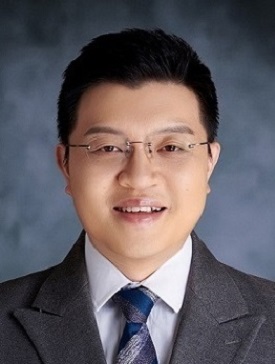 |
|
| |
Email |
liwufan@zju.edu.cn |
|
|
|
|
|
|
|
|
| |
Affiliation |
Zhejiang University |
|
|
|
|
|
|
|
|
| |
Title |
Investigation of CO2 solubility and flooding under reservoir conditions for CO2 storage and enhanced oil recovery |
| |
Abstract |
Carbon dioxide capture, EOR-utilization and storage (CCUS-EOR) are effective technologies for large-scale carbon reduction, and also the key technologies to significantly enhance the oil recovery of low-permeability reservoirs. CO2 has numerous advantages such as low viscosity, strong extraction capability, and high injectivity, which can expand the volume of crude oil, significantly reduce its viscosity and interfacial tension. More than half of the injected CO2 during flooding will dissolve or diffuse into the crude oil and formation brine, reacting with the rock to deposit and achieve CO2 sequestration. In this report, we selected the Huang 3 distinct of Changqing oilfield as the research subject, and conducted CO2 solubility and flooding experiments in collaboration with PetroChina Changqing Oilfield Company. Firstly, the solubility of CO2 in brine, crude oil under reservoir conditions were investigated, and it was found that the solubility of CO2 in both brine and crude oil increased with pressure and decreased with temperature, with solubility around 30-35 m3/m3 in brine and around 250-300 m3/m3 in crude oil. Then, the NMR-based monitoring CO2 flooding experiments were performed to analyze quantitatively the transient variation of the CO2-oil distribution. The results indicated that the oil recovery increased with the injection pressure. When CO2 flooding transitioned from immiscible to miscible displacement, the oil recovery jumped significantly. This study can provide data support and a guidance for effective CO2 sequestration and displacement. |
|
| |
Short Bio
|
Dr. Liwu FAN is professor in the School of Energy Engineering at Zhejiang University. He is the Head of the Institute of Thermal Science and Power Systems, and is also affiliated with the State Key Laboratory of Clean Energy Utilization.
Dr. FAN got his Ph.D. degree in Mechanical Engineering from Auburn University on August 2011. Since his doctoral study, he has been focusing on heat transfer and fluid flow at the microscale, in porous media, and involving phase change phenomena, with applications to thermal energy storage, cooling of electronics and batteries, thermal remediation of contaminated soil, oil displacement by water and CO2, and energy-efficient buildings, etc. As the first or corresponding author, he has published more than 110 papers in prestigious journals like Nat. Commun., Cell Rep. Phys. Sci., Adv. Funct. Mater., J. Fluid Mech., Int. J. Heat Mass Transfer, etc. All of his papers have been cited by more than 6700 times (>6300 without self-citation). His personal H-index is 41, and is listed as one of the “Highly Cited Chinese Researchers” in 2023. He has won the “Wu Chung-Hua” Outstanding Young Scholar Award in 2021.
|
|
| |
Name |
Lanlan Jiang |
|
|
|
|
|
|
|
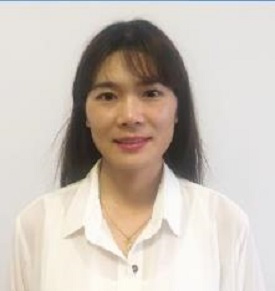 |
|
| |
Email |
lanlan@dlut.edu.cn |
|
|
|
|
|
|
|
|
| |
Affiliation |
Dalian University of Technology |
|
|
|
|
|
|
|
|
| |
Title |
Understanding CO2 mass transfer properties for de-risking CCS projects |
| |
Abstract |
Density-driven convection mixing has been identified to enhance CO2 capture efficiency or CO2 trapping in deep saline aquifers storage. In this work, the dynamics of CO2 dissolution-convection mixing and associated mass transfer properties between the movements of miscible fluids are investigated. The evolution of the non-equilibrium dissolved interface shows that an increase in Rayleigh-Darcy wave number at large Ra promotes unstable interfaces, the mixed thickness layer and onset time was also quantified. After fully CO2 dissolution, the detail on fingering developed was analyse. Moreover, the heterogeneous layer of sand plays a dominant role in finger evolution, channelling and fingering convection mechanisms were also found based on differences in the permeability layout of the media. Finally, a new Rayleigh-Sherwood equation is proposed and accurately analyses the CO2 dissolution rate. The above understandings on the mass transfer properties of fluids with density differences are required to design/operate deployment of CO2 capture and storage (CCS). |
|
| |
Short Bio
|
Dr.Lanlan Jiang is a core member of the Ministry of Education's National University Huang Danian-style Teacher Team, the Key Laboratory of Marine Energy Utilization and Energy Conservation of the Ministry of Education. The primary research focuses on CO2 storage and hydrate utilization. As a principal investigator, she has undertaken projects such as the National Key R&D Program for Young Scientists and the National Natural Science Foundation's general and youth projects. As a core member, she has contributed to more than ten major projects, including the National 13th Five-Year Key R&D Program, Major Instrument Special Projects, and the National Natural Science Foundation Joint Fund. In the past five years, she has published over 70 SCI-indexed papers, including 45 in JCR Q1 journals, such as AppL.Energ., Chem.Eng.J., and 4 ESI highly cited papers. She holds 46 authorized national invention patents and 7 PCT patents. Her accolades include the First Prize of the Ministry of Education Natural Science Award, the First Prize of the China Invention Association Invention and Innovation Award, the only Special Prize of the Marine Engineering Technology Award, and the Geneva Patent Gold Award. She serves on the editorial boards of two international journals and is a young editorial board member of Carbon Neutrality.
|
|
| |
Name |
Yasser Mahmoudi Larimi |
|
|
|
|
|
|
|
 |
|
| |
Email |
Yasser.mahmoudilarimi@manchester.ac.uk |
|
|
|
|
|
|
|
|
| |
Affiliation |
The University of Manchester |
|
|
|
|
|
|
|
|
| |
Title |
Physics informed neural network for turbulent flow over porous media |
| |
Abstract |
Turbulent flow passage over and through porous media, is ubiquitous in nature and its understanding is central for unravelling the physics underlying the natural phenomena in food drying, soil evaporation, and flow over vegetation. Additionally, gaining in depth knowledge on turbulent flow over porous media is crucial for fostering technological development in packed bed nuclear reactors, thermal energy storage, transpiration cooling, electronics cooling and heat exchangers. This talk will cover the turbulent flow and heat transfer characteristics of composite porous-fluid systems, specifically those consisting of a porous block immersed in a turbulent channel flow, using physics informed neural network (PINN) and pore-scale large eddy simulation approaches. |
|
| |
Short Bio
|
Yasser Mahmoudi Larimi is a Professor in Thermal Engineering with the School of Engineering at The University of Manchester. He has an international profile in clean and sustainable energy development through studying fundamentals and designs of low-carbon thermal and power systems, aiming to achieve net-zero emissions by 2050. He has given over 20 invited talks at conferences, universities and industrial events. Prof Larimi chairs the UK ‘Turbulent Heat Transfer’ National Group within the UK Fluids Network. He is a Fellow of the Higher Education Academy and is an Associate Editor of International Journal of Thermal Sciences. He is an invited author of a book on Convective Heat Transfer in Porous Media, and the author of over 120 peer-reviewed journal and conference publications.
|
|
| |
Name |
Dahua Shou |
|
|
|
|
|
|
|
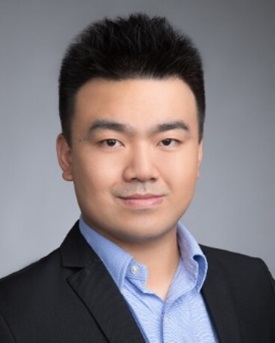 |
|
| |
Email |
dshou@polyu.edu.hk |
|
|
|
|
|
|
|
|
| |
Affiliation |
The Hong Kong Polytechnic University |
|
|
|
|
|
|
|
|
| |
Title |
Personalized Thermal and Moisture Management by Nature-Inspired Porous Textiles |
| |
Abstract |
In light of escalating global temperatures and increasingly extreme weather conditions, advancements in thermal and moisture management are critical for enhancing human health, comfort, performance, and safety. Nature-inspired porous textiles, leveraging principles from biomimicry, are at the forefront of these innovations, offering transformative solutions for personalized thermal and moisture management.
In this talk, significant developments will be discussed, including Sweatextile—the world’s first sweatable fabric for efficient directional sweat dissipation and Omni-Cool-Dry, which provides ultra-fast sweat removal and passive radiative cooling. Additionally, iActive intelligent activewear, featuring artificial “sweat glands” and a root-like liquid transport system, marks a significant leap in wearable technology. Furthermore, the creation of intelligent, thermally-insulated Soft Robotic Clothing that dynamically adapts to varying temperatures exemplifies the potential of these textiles. These advancements not only address practical needs but also pave the way for new findings, innovative insights, and impactful human-centric applications in the field of heat and mass transfer in porous media. |
|
| |
Short Bio
|
Dr. Dahua Shou is a PhD Supervisor and an Endowed Associate Professor with tenure at The Hong Kong Polytechnic University (PolyU). He serves as the Head of the Future Intelligent Wear Centre and the Program Leader of the MSc in Intelligent Wearable Technology. Dr. Shou is the recipient of the prestigious Distinguished Achievement Award (2023) from The U.S. Fiber Society and the PolyU Outstanding RPg Alumni Award (2024). He has been listed among the Top 2% Scientists Worldwide for both 2022 and 2023. Additionally, he received the Gold Medal at the Geneva Invention Exhibition in Switzerland in 2024 and has been twice honored with the TechConnect Global Innovation Award in the U.S. in 2021 and 2022.
Dr. Shou obtained his Ph.D. from The Hong Kong Polytechnic University and subsequently conducted postdoctoral research at The University of Sydney and Cornell University. His research focuses on thermal and moisture management, intelligent wearables, soft robotics, and advanced porous textiles.
Dr. Shou serves as an Associate Editor and Editorial Board Member for seven SCI journals (Q1/Q2) and as the Deputy Director of the Expert Committee of the National Textile and Apparel Comfort Technology R&D Center, China Textile Engineering Society. He will chair The U.S. Fiber Society Spring 2025 Conference.
Dr. Shou has published nearly SCI 100 papers in leading journals such as Science Advances, PNAS, Advanced Energy Materials, and Advanced Functional Materials. Over the past three years, he has been granted three U.S. patents and over ten Chinese patents. He has led over 20 competitive research grants (as PI) from GRF, ITF, GTF, ECF, and PolyU.
|
|
| |
Name |
Lin Qiu |
|
|
|
|
|
|
|
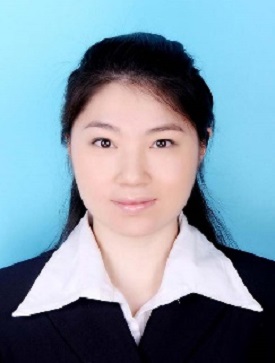 |
|
| |
Email |
qiulin@ustb.edu.cn |
|
|
|
|
|
|
|
|
| |
Affiliation |
Affiliation University of Science and Technology Beijing |
|
|
|
|
|
|
|
|
| |
Title |
Local thermal analysis based on Scanning Thermal Microscopy |
| |
Abstract |
Porous materials are widely used in heat transfer reinforcement, energy storage and catalyst carriers with their high specific surface area and light weight. With the broadening of the application of porous materials, the scale effect in the heat and mass transfer process inside them has become more significant. Local thermal analysis for porous materials at high spatial resolution is still challenging, which is more meaningful for the improvement of the porous materials’ performance. Here, a thermophysical property measurement system combining 3ω method and Scanning Thermal Microscopy (SThM) has been developed. The so-called 3ω-SThM realizes simultaneous nanoscale mapping of topography and local thermal conductivity (or thermal boundary resistance). Specifically, the local thermal conductivity of a single silica nanoparticle in the porous network was found to be 0.95 Wm-1K-1, noticeably lower than the bulk value. The local thermal conductivity of erythritol near SiC, Si3N4 and SiO2 porous skeleton walls shows a remarkable increase when approaching the erythritol/skeleton interface, and the Young’s modulus indicates the similar trend. Moreover, as a another important thermophysical property widely exist in porous composites, the thermal boundary resistance at van der Waals (vdW)-mediated point contact were implemented, and the measured Si3N4 /SiO2 vdW-mediated point contact was in good agreement with molecular dynamics simulation. |
|
| |
Short Bio
|
Lin Qiu is Professor of Thermal Science & Energy Engineering at University of Science and Technology Beijing. Her research focuses on understanding the micro- and nano-scale heat transfer. In particular, nano-carbon structures and their interfaces that mainly involve heat dissipation (e.g., carbon nanotube arrays, carbon nanotube/carbon fibers, graphene nanoplates and graphene-diamond interfaces, etc). Her group concentrates on challenging characterization of novel nanoscale materials with excellent thermal transport properties (e.g. Harmonic wave technology, Raman spectroscopy, Scanning thermal microscopy, etc). She also performs theoretical mechanism studies on the phonon transmission in nano-carbon materials using molecular dynamics simulation. She also explores possible applications, in collaboration with industrial partners, including nano-thermal interfacial materials, conformal flexible thermosensors, blood flow mapping sensors, thermophysical property measurement instrument, etc. She has co-authored more than 90 publications in international journals, and counts with more than 3,200 citations to her work, and selected into the talent program of "Excellent Youth Scholar of NSFC" and "Beijing Nova Program". |
|
| |
Name |
Yan Su (粟燕) |
|
|
|
|
|
|
|
 |
|
| |
Email |
yansu@um.edu.mo |
|
|
|
|
|
|
|
|
| |
Affiliation |
University of Macau |
|
|
|
|
|
|
|
|
| |
Title |
Multiscale Reynolds Number Expressed Lattice Boltzmann Porous Medium Thermofluid Models and Applications |
| |
Abstract |
A lattice Boltzmann porous medium model based on multiscale Reynolds numbers were developed to study effects of structure and thermofluid properties. The microscopic, mesoscopic, and macroscopic drag and heat transfer coefficients are quantitatively related with same sets of coefficients and geometry factors. Three scale drag coefficients, Nusselt numbers, and efficiency functions are expressed with varying structure properties and flow parameters. The general averaged microscopic scale drag and heat transfer coefficient constants can also be obtained by inversely correlated based on the pressure drop and fluid temperature change through the porous structures. Cross scale correlations are provided. Three-dimensional spiral flow structures are observed to increase the heat transfer in the third spatial direction. Larger local Reynolds numbers result in larger size spirals and the spirals appear at low local velocity zones behind solid phase materials with higher surrounding flushing local velocity. For spirals inside pores and behind the foam structures, the sizes are positively related to volume fractions of fluid and solid phases, respectively. Application examples will be shown such as natural and forced convection through sphere, fiber and metal foam structures, topology porous structure catalysts, multi-phase flows, and bio-vortex flow patterns. |
|
| |
Short Bio
|
Dr. Su is currently an associate Professor of Electromechanical Engineering in University of Macau. She received his PhD degree from the Department of Mechanical Engineering from University of Minnesota in 2006. In year 2000 and 2003, she obtained her Bachelor of Thermal Engineering from Tsinghua University, and Master of Mechanical Engineering from Hong Kong University of Science and Technology, respectively. Dr. Su’s research interests include Thermal Dispersion in Porous Medium, Renewable Energy Systems, Oscillating Flows, Indoor Air Quality and lattice Boltzmann Methods. She also serves as the director of the solar energy laboratory of University of Macau and associate editors of Journal of Heat Transfer (ASME) and Case Studies in Thermal Engineering (Elsevier). |
|
| |
Name |
Poo Balan Ganesan |
|
|
|
|
|
|
|
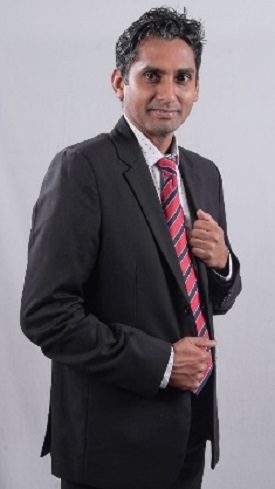 |
|
| |
Email |
poo_ganesan@um.edu.my |
|
|
|
|
|
|
|
|
| |
Affiliation |
Department of Mechanical Engineering
Faculty of Engineering
University Malaya
Kuala Lumpur, MALAYSIA
|
|
|
|
|
|
|
|
|
| |
Title |
Innovations in Thermal Management: Compact Heat Exchangers with Open-Cell Metal Foam and Thermal Interface Materials |
| |
Abstract |
This research addresses the challenge of optimizing heat transfer performance in compact heat exchangers, which often encounter high thermal resistance. The study aims to advance the development and thermal management efficiency of compact heat exchangers utilizing open-cell metal foams and Thermal Interface Materials (TIMs). The research is divided into micro and macro-level studies.
At the microscale, the study investigates the thermal resistance of sandwich structures composed of open-cell metal foams, base plates/surfaces, and TIMs in two configurations: Type 1 and Type 2. Thermal resistance and thickness were assessed under compressive loads of 0-60 N using a custom-built thermal resistance tester compliant with ASTM D5470 standards. The findings reveal that the soft TIM sample (PC94) achieved the highest reduction in thermal resistance—40%—for Type 1 configuration with 60 PPI metal foam. This demonstrates that integrating metal foam, TIMs, and base plates effectively reduces thermal resistance and enhances heat transfer.
At the macro level, a compact heat exchanger incorporating metal foam and TIMs was developed and evaluated. The heat exchanger, measuring 20 x 18 cm (comparable to a car radiator), was assembled using a plate-type heat exchanger method. The study explored various commercially available TIMs, different pore sizes of metal foams (20 and 40 PPI), and varying compressive loads. Experiments employed copper foams with 1 mm thick plate fins and TIMs including PC94 (4 W/mK), PL05 (5 W/mK), and Odessey (12.8 W/mK). Testing was conducted at Reynolds numbers up to 45,000, and the Nusselt number and pressure drop ratio were measured using a custom test rig. The results indicate that the 20 PPI foam with Odessey TIM demonstrated a 25% increase in Nusselt number ratio at 3% compression. The highest thermal conductivity TIM (Odessey, 12.8 W/mK) yielded the best heat transfer performance.
This study highlights the effectiveness of combining metal foam, TIMs, and fins in compact heat exchangers to enhance heat transfer by increasing surface area between components. It also provides insights into innovative bonding techniques for metal foams and base plates, contributing to the advancement of high-performance compact heat exchangers. Such developments are crucial for promoting energy savings, improving system efficiency, supporting renewable energy, and fostering new technologies in the pursuit of sustainable goals.
|
|
| |
Short Bio
|
PooBalan holds a Bachelor's degree in Mechanical Engineering from the University of Technology Malaysia, Skudai, Malaysia (1999), a Master’s degree (MSc) in Advanced Mechanical Engineering from the University of Bristol, England, UK (2005), and a Ph.D. in Fluid Mechanics and Heat Transfer from the University of Aberdeen, Scotland (2010). He also served as a Postdoctoral Research Assistant at the University of Aberdeen in 2010, focusing on thermal-hydraulic problems related to nuclear power plants.
PooBalan’s industry experience includes roles as a Process and Product Engineer at AIWA Electronic Sdn Bhd and Venture Electronic Sdn Bhd in Johor, Malaysia, from 2000 to 2004. He is a Chartered Engineer (CEng) with the Institution of Mechanical Engineers (IMechE), UK, and a Professional Engineer (PEng) with the Board of Engineers Malaysia (BEM).
His expertise lies in fluid mechanics, heat transfer, thermal fluids, pump characteristics and applications, and heat exchangers. Currently, PooBalan is working on projects involving aeration technology for aquaculture, development of a venturi nozzle for mixing water and air, and micro-nano bubble generators. Notably, he is engaged in the development of compact heat exchangers using open-type metal foam. Open-type metal foam is an advanced material known for its high porosity and large surface area, which significantly enhances heat transfer efficiency. PooBalan’s work focuses on leveraging these properties to design compact and efficient heat exchangers suitable for various industrial applications. These heat exchangers can improve thermal performance and reduce size and weight compared to traditional designs, making them ideal for applications where space and efficiency are critical.
Please refer https://umexpert.um.edu.my/poo_ganesan.html for more details. |
|
| |
Name |
Peng XU |
|
|
|
|
|
|
|
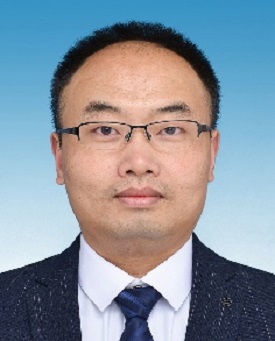 |
|
| |
Email |
xupeng@cjlu.edu.cn |
|
|
|
|
|
|
|
|
| |
Affiliation |
China Jiliang University
|
|
|
|
|
|
|
|
|
| |
Title |
Applications of Fractal Geometry in Porous Media |
| |
Abstract |
Over the past four decades, fractal geometry has sparked considerable interest in many disciplines to characterize irregular and disorder objects that traditional Euclidean geometry fails to analyze. Since Katz and Thompson presented experimental evidence indicating that pore spaces of sandstone are self-similar in 1985, fractal geometry has been successfully applied into variety of porous media such as soil, rock, coal, shale, fiber, wood, ceramic, concrete, tissue, etc. In this talk, the background and applications of fractal geometry in porous media is firstly reviewed. And the fractal theory and methods to characterize and reconstruct the complex structures of porous media are illustrated. The fractal models for the transport properties of porous media are introduced. The potential research topics related to fractal geometry are finally pointed out.
|
|
| |
Short Bio
|
Peng Xu is full professor and dean of College of Energy Environment and Safety Engineering, China Jiliang University. He earned his PhD from Huazhong University of Science and Technology in 2009. He was also visiting scholar at National University of Singapore (2007-2009) and visiting professor at McGill University (2015). The research interests includes heat and mass transfer in porous media, multiscale and multiphysics modeling, fractal geometry and its applications in engineering. He serves as the editor board of Fractals, academic editor of International Journal of Coal Science & Technology. Prof. Xu has undertaken 9 national and provincial funding projects, published 2 books and more than 100 international journal papers. Prof. Xu is ranked as the world’s top 2% most-cited scientists. He won 3 provincial science and technology awards and 1 natural science award from Ministry of Education of China. |
|
| |
Name |
Hui Wang |
|
|
|
|
|
|
|
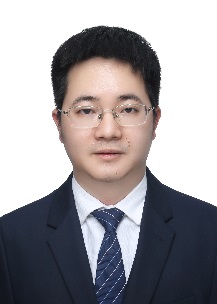 |
|
| |
Email |
wanghui198@xjtu.edu.cn |
|
|
|
|
|
|
|
|
| |
Affiliation |
Machine learning assisting intelligent control of heat and mass transfer in porous media
|
|
|
| |
Title |
Applications of Fractal Geometry in Porous Media |
| |
Abstract |
In this topic, three parts about how the machine learning can assist intelligent control of heat and mass transfer in porous media are introduced: firstly, the coefficient relationships between porous media structure and heat and mass transfer performance are distinguished and built by machine learning; secondly, heat and mass transfer fields in different morphology porous media are predicting by machine learning; thirdly, the best structure information of porous media in heat and mass transfer properties can be restructured by machine learning coupling with topology optimization. Finally, the conclusion and respective about the machine learning assisting intelligent control of heat and mass transfer performance in porous media in future are introduced.
|
|
| |
Short Bio
|
II have mainly engaged in research on the multi-scale heat and mass transfer mechanism of complex structures inside aircraft, basic scientific problems based on deep learning oriented regulation, and engineering applications such as energy management of new energy aircraft (hydrogen energy, solar energy).
So far, a total of 80 academic journal papers have been published, including 68 SCI journal papers, 53 SCI papers as first/corresponding author (IF>10 papers, 6 papers), over 30 authorized invention patents (including 11 first inventors), 3 authorized software copyrights, 2 US patent applications, and 2 patent transfers. Publish one group standard (ranked second) and one monograph on solar unmanned aerial vehicles (ranked second). The paper has been cited by Chemical Society Reviews, Joule, Advanced Materials, and Nano Micro Letters. Among the first author SCI papers, there are 2 ESI highly cited papers, 1 paper won the 2019 Journal of Thermal Science Excellent Journal Paper Award, 1 paper won the 2020 High Cited Review Paper Award from Applied Energy Journal, and 1 paper has become one of the top 3 cited papers since the founding of the Journal of Thermal Science.
I have received one second prize for scientific and technological progress from the Chinese Society of Aeronautics in 2023 (ranked second), one first prize for excellent scientific and technological research achievements in Shaanxi Province's higher education institutions in 2023 (ranked second), one first prize for technological invention from the Shaanxi Society of Aeronautics in 2023 (ranked second) and so on.
|
|
| |
Name |
Chao-Zhong Qin |
|
|
|
|
|
|
|
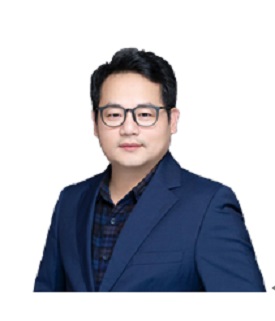 |
|
| |
Email |
chaozhong.qin@cqu.edu.cn
|
|
|
|
|
|
|
|
|
| |
Affiliation |
Chongqing University
|
|
|
|
|
|
|
|
|
| |
Title |
Modeling of Flow and Transport in Multiscale Digital Rocks
|
| |
Abstract |
Many subsurface and industrial porous media such as carbonate rocks, filters, and catalysts possess multiscale porous structures that play an important role in regulating fluid flow and transport. A pore-network-continuum hybrid flow model is promising for numerical studies of a multiscale digital rock. It is, however, still prohibitive to the REV-size modeling because tens of millions of microporosity voxels may exist.
In this talk, I will introduce a novel and robust algorithm for coarsening microporosity voxels of a multiscale digital rock. Then, coarsened microporosity grids are stitched with the pore network of resolved macropores to form efficient computational meshes. I will show that the coarsening algorithm can reduce computational grids by about 90%, which substantially reduces computational costs. Meanwhile, coarsening microporosity has a minor impact on the predictions of absolute permeability, gas production curves, and breakthrough curves of solute transport.
Finally, I will present the application of the hybrid model in the modeling of capillary pressure and relative permeability curves of tight sandstones. The developed pore-network-continuum hybrid model aided by grid coarsening of microporosity serves as a useful numerical tool to study flow and transport in multiscale porous media.
|
|
| |
Short Bio
|
Prof. Chao-Zhong Qin is from the Department of Carbon Storage Science and Engineering, Chongqing University. In 2013, he obtained his doctoral degree from the Department of Earth Sciences, Utrecht University, The Netherlands under the supervision of Prof. Majid Hassanizadeh. He served as the managing director of the Darcy Research Center at Eindhoven University of Technology between 2016 and 2019. He joined Chongqing University at the end of 2019. His research interests mainly focus on multiscale flow and transport in porous media and digital rock analysis. He has published over 50 articles in peer-reviewed top journals including Geophysical Research Letters, Water Resources Research, Advances in Water Resources, and Journal of Petroleum Science and Engineering. |
|
| |
Name |
Zhilong Cheng |
|
|
|
|
|
|
|
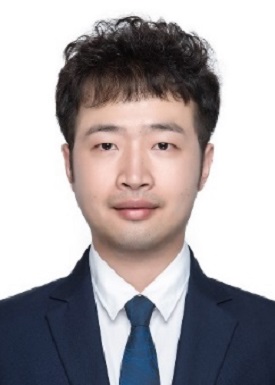 |
|
| |
Email |
chengzl@xjtu.edu.cn
|
|
|
|
|
|
|
|
|
| |
Affiliation |
Xi’an Jiaotong University
|
|
|
|
|
|
|
|
|
| |
Title |
Graphene aerogels composite phase change materials with anisotropic porous structure and its heat transfer performance
|
| |
Abstract |
The passive thermal management of electronics based on phase change materials (PCMs) is essential for ensuring the longevity and functionality under harsh environment. To meet the need for high-performance PCMs with low density, high enthalpy, and high thermal conductivity, polyvinyl alcohol (PVA)/graphene aerogel composite PCMs with anisotropic porous structures were developed. The composites exhibited improved thermophysical properties and rapid thermal response performance. To address challenges in heat distribution, a multi-cavity structure was introduced to enhance heat transfer, solving the problem of inhomogeneous heating and uneven temperature distribution during phase change. By employing composite PCMs with different phase change temperatures in each cavity, synchronous phase change with improved heat management efficiency was achieved. To further explore the potential for practical applications, a novel heat sink design combining fins with composite PCMs was proposed. This design successfully reduced secondary thermal resistance and improved overall efficiency by using composite PCMs as additional heat sink. The findings highlight the versatility and effectiveness of composite PCMs in aerospace thermal management systems, providing a set of feasible solutions for optimizing thermal control in various applications.
|
|
| |
Short Bio
|
Zhilong Cheng is an Associate Professor at the School of Energy and Power Engineering, Xi’an Jiaotong University. He received his Ph.D. in Engineering Thermophysics form Xi’an Jiaotong University in 2019. He was a Post-doc at Department of Energy and Power Engineering, Tsinghua University from 2019 to 2022. He was a visiting scholar in the Mechanical Engineering Department at Stanford University from 2017 to 2018. His current interests include porous media, heat transfer and reacting flow. He has published more than 30 journal papers. He has given 4 invited keynote lectures at international conferences. |
|
| |
Name |
Xiaoping Yang |
|
|
|
|
|
|
|
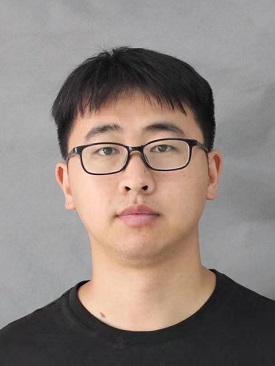 |
|
| |
Email |
yxping@xjtu.edu.cn
|
|
|
|
|
|
|
|
|
| |
Affiliation |
School of Chemical Engineering and Technology, Xi’an Jiaotong University
|
|
|
|
| |
Title |
Enhancement of boiling and evaporation by mutiscale porous structure: From fundamental study to applications
|
| |
Abstract |
Boiling and evaporation represent highly efficient processes for heat transfer. Nevertheless, the absence of sufficient nucleation sites and difficulty in wetting of plain surface results in limited critical heat flux (CHF) and heat transfer coefficient (HTC). To tackle the thermal management challenges of high-power chips, we fabricated and tested micro-pin fins and bi-porous structures, respectively, on aluminum and copper surfaces. These stuctures were aimed at enhancing boiling and evaporation heat transfer. The micro-pin fins on the aluminum surface yielded remarkable improvements, with CHF increasing by 214% and HTC for boiling soaring by 383%. This enhancement enabled our 3D aluminum-based thermosyphon heat pipe to dissipate heat of 1000W chips with a thermal resistance as low as 0.07 K/W. Additionally, the bi-porous structure on the copper surface achieved a CHF exceeding 620 W/cm² and an HTC of 16 W/cm²K, empowering the copper-based vapor chamber to dissipate heat of 1100W (220W/cm²) chips while at a thermal resistance of 0.05 K/W. Both the 3D aluminum-based thermosyphon heat pipe and copper-based vapor chamber have been successfully deployed in the thermal management systems of high-performance data centers and 5G stations, underscoring their practical relevance and effectiveness.
|
|
| |
Short Bio
|
Dr. Xiaoping Yang received his Ph.D in Xi’an Jiaotong University from 2012.9~2018.6, then joined School of Chemical Engineering and Technology, Xi’an Jiaotong University as a postdoc until 2022.7 and promoted to associate professor until now. He attended the joint doctoral-student program in University of Illinois at Urbana and Champaign from 2016.10~2017.11. His research area is high power chip cooling technologies underground (data center, RF power device and mobile device) and in space (spacecraft, satellite), focusing on the condensation, boiling and evaporation heat transfer and enhancement in loop heat pipe, vapor chamber and microchannel heat sinks. He has published over 40 journal papers on Int.J of Heat & Mass Transfer, Applied Thermal Engineering, Int.J of Multiphase Flow, etc. He is also authorized 25 national invention patents and one international patent. He has got funding from the Manned Space Engineering of China, NSFC, National Key R&D Program of China, Postdoctoral Science Foundation of China and from several leading technology companies such as Huawei, ZTE, Goertek and so on. As a principal investigator, he has participated in a number of key projects such as the National Key R&D Program of China, key projects of the NSFC, China-Europe manned spaceflight and the Chinese Space Station project. |
|
| |
Name |
Xiaofan Yang
|
|
|
|
|
|
|
|
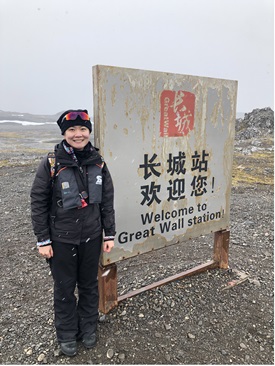 |
|
| |
Email |
xfyang@bnu.edu.cn
|
|
|
|
|
|
|
|
|
| |
Affiliation |
Beijing Normal University
|
|
|
|
| |
Title |
porousRTFoam v1.0: An open-source numerical platform for simulating pore-scale reactive transport processes in porous media
|
| |
Abstract |
porousRTFoam v1.0 is a software package developed to solve pore-scale hydro-bio-geochemical processes in porous and fractured media. The software is developed in OpenFOAM®, a widely used open-source CFD environment built on C++ library. The micro-continuum approach is adopted to solve a system of equations, including the Darcy-Brinkman-Stokes equation, the advection-diffusion equation with geochemical source terms, as well as the biomass evolution equation with Monod kinetics for biofilm growth. The software is validated against analytical solutions for flow and solute transport. Calcite dissolution and biofilm formation are then used as benchmark cases to demonstrate the capabilities of porousRTFoam, with results compared against existing numerical packages and experimental data. The software is further demonstrated to be adaptable for building specific models, such as, mineral dissolution and precipitation in porous media and microbially induced calcite carbonate precipitation (MICP) in fractured media. This newly developed software has the potential to simulate and advance a fundamental understanding of various pore-scale reactive transport mechanisms, including but not limited to adsorption and desorption, cell aggregation, as well as cotransport of contaminants and bacteria in subsurface environments.
|
|
| |
Short Bio
|
Dr. Xiaofan Yang is a Professor in Subsurface Hydrology affiliated with Faculty of Geographical Science, Beijing Normal University (BNU). Before joining BNU, she was a Scientist in Hydrology at the U.S. Department of Energy (US DOE)’s Pacific Northwest National Laboratory (PNNL). Her research interests include subsurface hydrology, reactive transport modeling, flow and transport in porous media, watershed science and ecosystem function. She has published more than 70 research articles in scientific journals such as ES&T, WRR and JoH. Her research has been funded by NSFC, MEE, E DOE SBR, EPA, Exxon-Mobile, CNOOC, etc. She is currently Vice President of IASC TWG and executive member of AGU-CZO early-career committee. |
|
| |
Name |
Mikhail Sheremet |
|
|
|
|
|
|
|
 |
|
| |
Email |
Michael-sher@yandex.ru, miksheremet@gmail.com
|
|
|
|
|
|
|
|
|
| |
Affiliation |
Tomsk State University
|
|
|
|
| |
Title |
Application of solid/porous fins for heat transfer enhancement. Numerical simulation.
|
| |
Abstract |
Nowadays, one of the great challenges in various engineering fields is a development of effective active and passive cooling systems. In the case of passive technique, it is possible to use the porous fins like the heat transfer extended surface. The present lecture is about mathematical modeling of porous fins application using Newtonian and non-Newtonian working media to cool the heat-generating elements. Analysis was performed using in-house computational codes with non-primitive variables taking into account the comprehensive validation. Obtained results will be presented and discussed.
|
|
| |
Short Bio
|
Prof. Dr. Mikhail Sheremet is a Head of the Laboratory on Convective Heat and Mass Transfer and Head of the Department of Theoretical Mechanics at the Tomsk State University. He received the Candidate of Sciences in Physics and Mathematics degree from Tomsk State University (2006), and Habilitation (Russia, Doctor of Sciences in Physics and Mathematics, 2012) from Tomsk State University. Prof. Dr. Sheremet has published over 500 papers in peer-reviewed journals and conference proceedings, and contributed to several books. He obtained the Web of Science Award 2017 in the category of Highly Cited Researcher in Russia. He is Highly Cited Researcher in the field of Cross-Field-2021 (Clarivate Analytics). He is #233 in the world ranking and #1 in Russia based on the 2024 Edition of the Ranking of Top 1000 Scientists in the area of Mechanical and Aerospace Engineering (Research.com). He was enlisted in 2018–2024 Top 2% Scientists of the World by Stanford University. He is a member of Editorial Board of International Journal of Numerical Methods for Heat & Fluid Flow, Alexandria Engineering Journal, Journal of Applied and Computational Mechanics, Carbon Neutrality, Heat Transfer Research and other journals. He is a member of the Scientific Council of the International Centre for Heat and Mass Transfer. h-index = 71 (Scopus). |
|
|
|
|
|